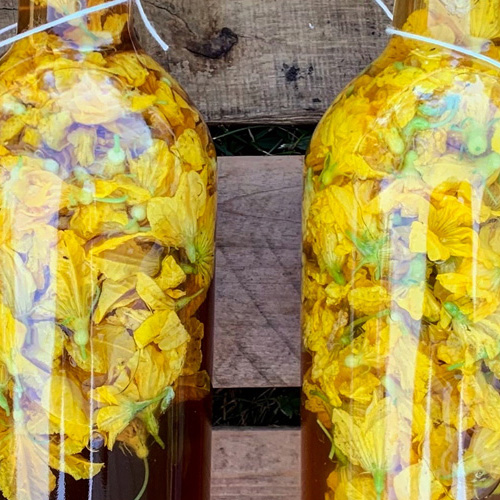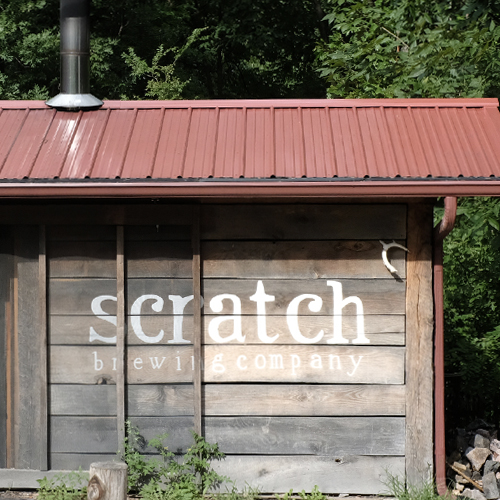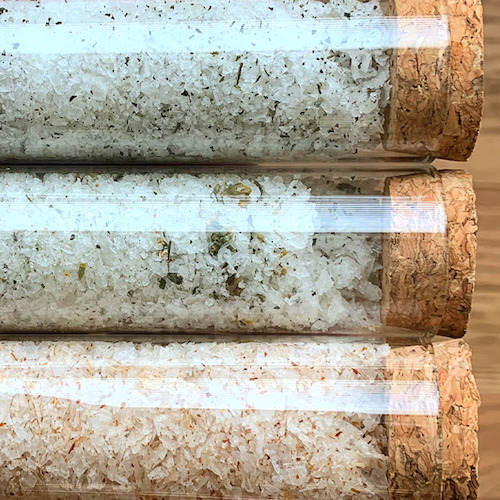Each year, a yellow haze in the air lets us know that spring is over and summer’s heat is just around the corner. The red and white pines on our property cloud the air with pollen for about a week. It’s an overwhelming time of year for a forager. On our property, the only factors limiting how much pine we can collect are time and dedication. After a few days of gathering, the steel from my snips starts to rub the skin off the base of my thumb.
Sometimes, I’ll only find one or two clusters of pollen cones, or catkins, on a branch. Now and then, If I’m lucky, I might find a five-spot or an extremely rare six-bagger. I’ll snip the catkins just below the first set of needles and place them in a clean plastic bag or bucket. Some pollen blows away in the wind while I cut. By the time I’m done, it speckles my hands, arms, shirt, and boots. After pollen cones come the seed cones, also called pine cones. We collect those, too.
On our property, the only factors limiting how much pollen we can collect are time and dedication. After a few days of gathering, the steel from my snips starts to rub the skin off the base of my thumb.
The white pine distributes its pollen about a week after the red. We treat the pollen cones the same way, but we let the seed cones develop longer into the season. (Last year, I split a white pine’s long, green seed cone and pine nuts spilled out. We’ve forgotten so much over the years. Native pine nuts can be frozen fresh or roasted like sunflower seeds.)
You’re probably wondering what to do with catkins and young pine cones.
You can shake the pollen off the catkins and reserve it on its own, to use as a powdery, nutritious seasoning. You won’t get much, but it’s a straightforward way to preserve the flavor of early-summer pine. Keep it in a glass jar in the freezer.
I like to infuse catkins in honey. Immerse trimmed (needle-free) pollen cones in honey and store the mixture in a cool, dark place. Let it sit for at least a week, then add it to tea or desserts for a flavor reminiscent of a walk in a pine forest. Thin it with warm water (about two parts honey to one part water) to make a honey syrup ideal for gin-based drinks. You can also steep the catkins themselves in water for a forest tea.
For young pine cones, I use the following recipe, which makes a sweet, woodsy preserve that we spoon over ice cream: Trim and clean one quart of immature pine cones. (They should be fingernail-sized and tender.) Soak them in cold water for about an hour, then rinse them in a wire strainer. Add cones to a large pot and cover them with two quarts of honey and one quart of water. Simmer for about two hours, or until thickened, and let cool for about half an hour. After the cones and syrup are cool, transfer the mixture to a clean glass jar. Stored in the refrigerator, it should keep for at least several months. It’s tasty over ice cream and rich cheeses.




